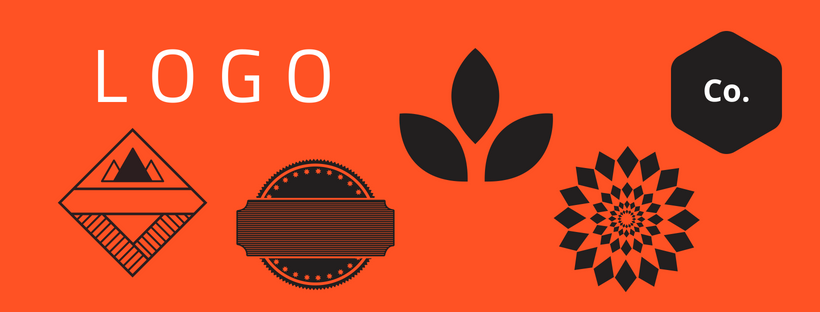The choice of a logo design for your brand cannot be underestimated. Your logo is a vital component for gaining brand recognition, so you need it to represent you. Your logo should be professional, clear and striking if you are to be remembered.
Often, this aspect of launching a business can stump most people. They spend weeks and months scratching their heads trying to think of an adequate design.
The consequences of getting this wrong can jeopardize your business.
Think about it. We have all been stuck behind vans on the motorway that display some very poor logo examples, probably designed on free software at home.
What do you think when you see this?
Do you think that the brand reflects professionalism or trust? Or more likely you judge the brand to be amateurish and low quality.
This might not be fair, as the service may be excellent, and the people behind that company highly skilled. Sadly, appearances are what create that first and importantly, lasting impression.
You don’t want to be that person. You want people to look at your brand and feel intrigued, excited and a little bit in love.
Therefore, our number one tip is to get your logo professionally designed by someone who has a great portfolio.
That’s not the end of the story, however.
Briefing the designer
A good designer is a highly creative professional with a talent for coming up with ideas. Everything they do looks unique to the particular client they are working with. But you still have to give them a solid design brief or at least some good ideas about what you want your brand to say.
Yes, if you are a laid-back personality type, you may be happy to give the designer free rein over the first mock-ups. It is fair to say that most people who have spent time building a company up will want to see some of themselves in the branding. How can the designer know this without your suggestions?
It’s also true that some business owners may not have any idea what they want their logo to look like. Likewise, we have all worked with people who don’t know what they want, and when presented with a design, say something along the lines of “I don’t know what I want, but I don’t want that.”
While it is a worthwhile starting point to know what you don’t want, it can waste the designer’s time if they have to go back to the drawing board. For you, this means your budget may have to go up to facilitate the amount of redrafts you end up needing.
Most designers will give you two rounds of amends. After this, you need to pay for more. It’s worth bearing this in mind right at the start so you get the best work from your designer at a lower cost.
Here are the things you need to think about before consulting with your designer.
AUDIENCE
Who are you trying to appeal to? If you make children’s clothes then bright colours with playful images will work better than a monochrome or text-based logo. To help you hone your research, create a “buyer persona”.
A buyer persona is an avatar that represents the person you want to sell to. Get a piece of paper and think of their name, age and job. Also ask:
- What sort of place do they live in?
- Who do they live with?
- What do they like to do at the weekend?
- What are their worries?
- What makes them proud?
- How will your product/service make their life better?
When you have an idea of who this person is, you can come up with an idea of what branding will attract them to your company.
ADJECTIVES
If someone were to describe your brand in three words, what would those words be? Make a note.
Decide:
- Do you want to be perceived as fresh and modern, or established and classic?
- Do you want your brand to appear trustworthy, playful, sophisticated, warm or something else?
- What would your buyer persona appreciate in a brand?
OTHER COMPANIES’ LOGOS
A great place to start getting inspiration is other people’s designs. While we don’t condone copying (and no self-respecting designer would do this), it is helpful for them to get an idea of your tastes.
Ask yourself:
- Which are the brands you like to follow? What works about their branding?
- What logos do your competitors use? Do you want to be like them or different?
- Do you prefer text-based logos or icons?
- What logos don’t you like and why?
COLOUR
The most eye-catching aspect of a logo is its colour. Ideally, the logo embodies your brand colour scheme. Remember your logo should be recognisable in gray scale on printed documents.
If you don’t have a brand colour scheme, try using the Adobe Color Wheel to pick a starting colour and find out which colours match it.
You can select a range of colour schemes from a drop down list, for example analogous, monochromatic or triad.
Another alternative is to upload a picture file and find out the hex codes for the colours in the image.
FONTS
Many logos contain fonts. To help you pick out something suitable, go to a website such as Google Fonts to pick your primary font (to be used in headings) and then try finding a complementary secondary font for your website copy at typ.io.
Think about:
- Serif vs sans-serif
- Do you like handwriting fonts or uniform computer fonts?
- Do you like bold, heavy fonts or lighter variations?
Now’s the time to be opinionated, so don’t be afraid to tell your designer exactly what you are after!
Read more:
How to Prevent Delays to Your Website Project

